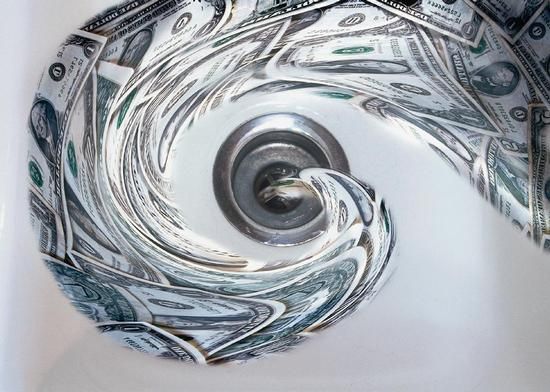Very good piece here by Robert Murphy of the Austrian school regarding stock prices and how it’s erroneous for people to state that money “goes into” other financial assets. He’s dead right of course. The fact that the Fed has increased the quantity of reserves/deposits doesn’t mean more money is “going into” stocks. It just means that the composition of the private sector’s balance sheet has changed which may or may not lead to higher prices. Let me elaborate.
When you buy a share of stock someone else is selling you their cash. You are getting their stock and they are selling you their cash. The price you agree on is the new price of the security. But you aren’t putting money into that security. You are engaging in a simple exchange. That’s why they call the NYSE the New York Stock EXCHANGE.
A good way to think about this relative to QE is to think about how a stock buyback works. When a company buys back shares they are changing the composition of the outstanding financial assets. All else equal, this will lead to higher EPS which will lead to higher stock prices. But all else isn’t always equal. Indeed, if the company’s operations are failing massively it doesn’t matter if they’re reducing the share count – the stock will still price lower.
The same basic idea can be applied to QE. If the real economy doesn’t improve then the Fed can alter the composition of financial assets all it wants and it could make no difference for share prices. All of this highlights the importance of “value” being separate from merely looking at quantities of assets and understanding the idea that more money doesn’t mean more money is “going into” stocks. It could mean more money is competing to own the same quantity of stocks, but money doesn’t “go into” stocks in any meaningful way that automatically implies higher prices. I think you get the point.
Anyhow, a similar point can be made regarding bank loans and QE. I bring this up because I am going to pick on Robert Murphy a little bit. He correctly points out that QE and more deposits doesn’t mean that more money is “going into” stocks. But he should also acknowledge that this doesn’t necessarily mean more money needs to “go into” bank loans. He stated back in 2011 that the excess reserves in the banking system posed some huge inflation threat as they were beginning to “leak out” of the banking system. But this concept of reserves “leaking out” is as meaningless in the context of bank lending as it is in the context of stock prices. The reason is simple – banks reserves don’t “go into” making loans. When a bank makes a loan it expands its balance sheet endogenously. It makes loans and finds reserves later if necessary. As I’ve stated ad nauseam, the textbook concept of the money multiplier is wrong.
I’ve beaten this drum pretty loudly for 5+ years now and it’s nice to see that some economists are at least understanding the point about stock prices. But it would be nice if they also started acknowledging the point as it pertains to bank lending and QE as well. It would make for a much more informed and accurate discussion.
Related:
The Bank of England Debunks the Money Multiplier
Bank Lending is Primarily a Demand Side Issue
The Money Multiplier Doesn’t Exist Outside the Zero Lower Bound Either
Mr. Roche is the Founder and Chief Investment Officer of Discipline Funds.Discipline Funds is a low fee financial advisory firm with a focus on helping people be more disciplined with their finances.
He is also the author of Pragmatic Capitalism: What Every Investor Needs to Understand About Money and Finance, Understanding the Modern Monetary System and Understanding Modern Portfolio Construction.



Comments are closed.